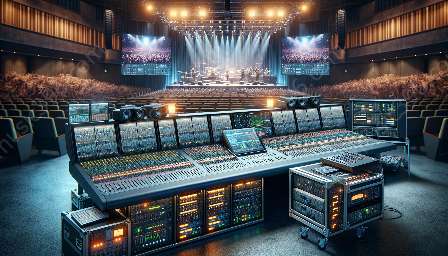Dynamic processing plays a vital role in audio production and mixing, influencing the level and dynamics of audio signals. Understanding its principles is crucial for achieving optimal sound quality and balance in recordings and mixes.
The Basics of Dynamic Processing
Dynamic processing involves altering the volume and dynamics of audio signals through a range of techniques and tools. It includes controlling the level of audio, managing dynamic range, and shaping the overall dynamics of a sound source.
Understanding Dynamic Range
Dynamic range refers to the difference between the quietest and loudest parts of an audio signal. Dynamic processing techniques help to manage dynamic range, ensuring consistency and balance in the audio signal.
Role of Dynamic Processing in Audio Production
Dynamic processing is essential in audio production as it allows engineers to sculpt the sound, control the level of different elements in a mix, and ensure that the final product is clean and well-balanced.
Dynamic Processing in Mix
Dynamic processing is a fundamental part of the mixing process, enabling engineers to shape the dynamic range and level of individual tracks and the overall mix. This process involves using tools such as compressors, limiters, and expanders to achieve the desired results.
Key Principles of Dynamic Processing
- Compression: The process of reducing the dynamic range of an audio signal by attenuating the louder parts, creating a more consistent level.
- Expansion: Expanding the dynamic range of an audio signal, enhancing the contrast between quiet and loud parts.
- Gating: Controlling the level of an audio signal by allowing or blocking the passage of sound based on a set threshold.
- Limiter: Preventing audio signals from exceeding a specified level, ensuring that peaks are limited to a set threshold.
Optimizing Audio Signals with Dynamic Processing
By applying dynamic processing techniques, engineers can optimize audio signals, allowing them to sit well in a mix and ensuring a balanced and professional sound.
Conclusion
Dynamic processing plays a crucial role in shaping the sonic characteristics of audio signals, making it an indispensable tool in the field of audio production and mixing. Understanding the principles and techniques involved in dynamic processing is essential for achieving high-quality and impactful audio productions.




























